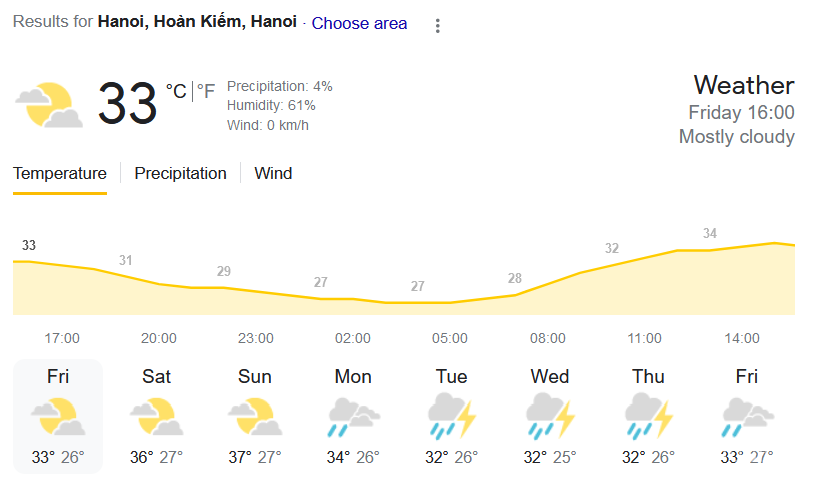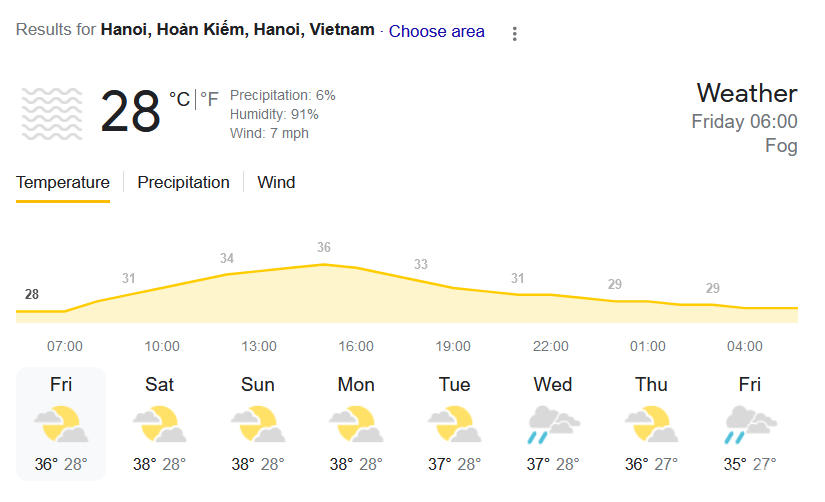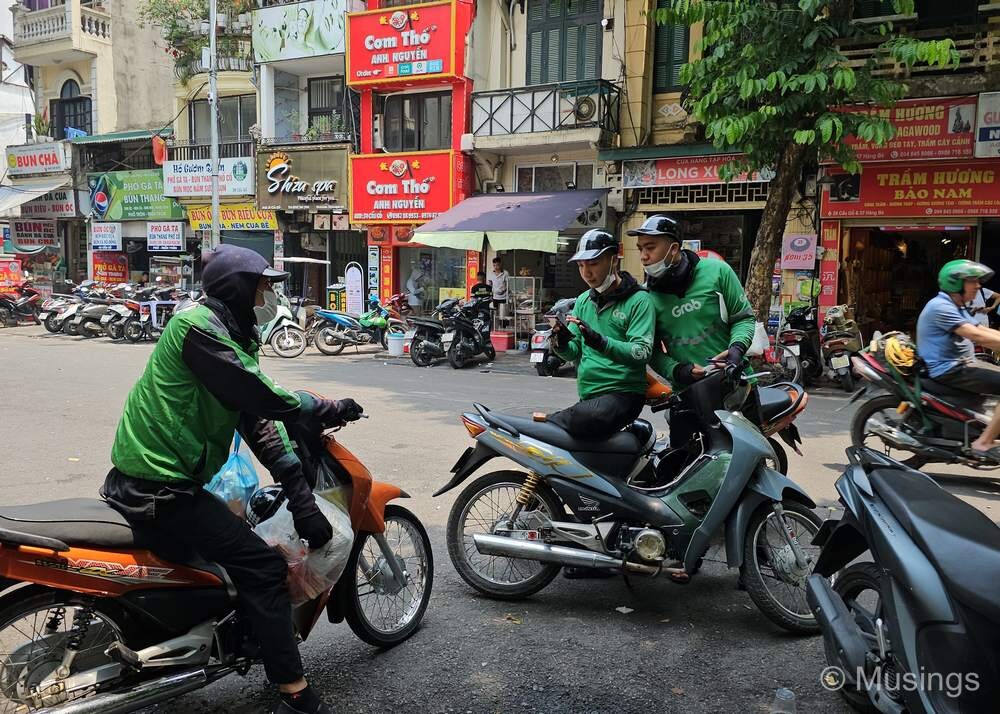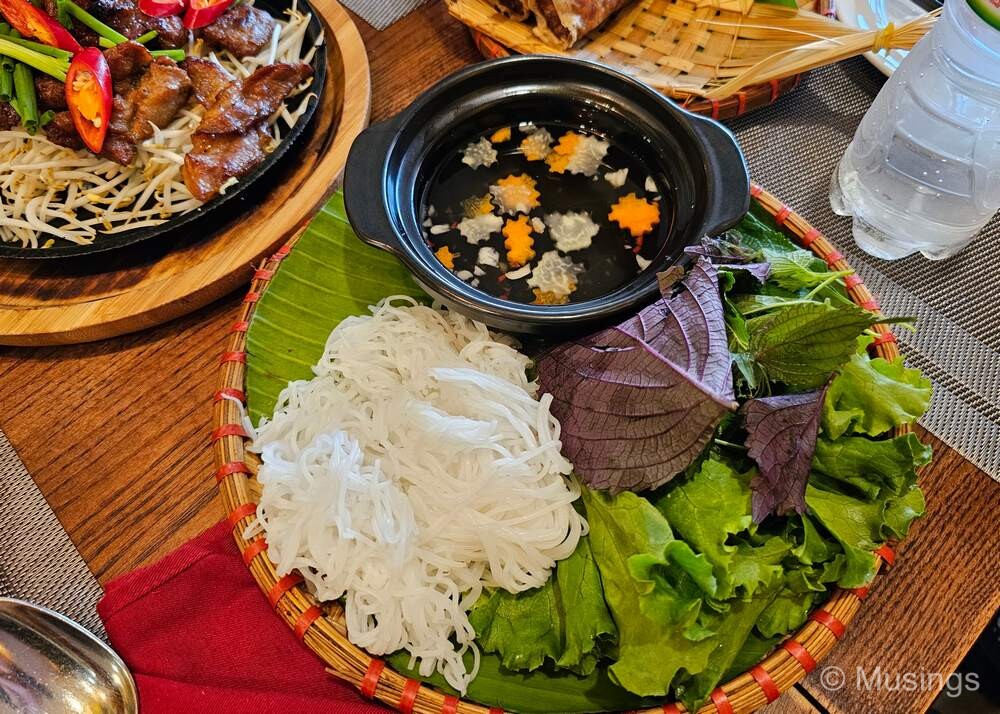This was our first trip to Vietnam, and we count our blessings that the our ten day vacation there was largely accident and incident free. None of us got food poisoning – vs when I came down with that in Koh Phangan in 2014 – fell sick – vs when I got struck with dengue in Maldives 2019 – got injured – vs when I pulled a muscle in Kansai 2022 that took 5 months to mostly heal. OK; so my stay-safe rate in vacations isn’t particularly high, which just further underlines that I’m glad we came out of this trip with only great memories and experiences!
As is customary for every major trip we’ve made this past decade, I’ll do a reflective post after the trip about the country we traveled to: not just about the places we visit, but also of food, culture and the overall trip.
I guess the first thing to reflect is the length of the trip. The June holiday break for public school-going students here in Singapore is well more than 10 days, but because of reasons of work, an extended week that includes the weekends before and after that is about as much as I could take this year. Thankfully, 10 days indeed was more than enough for Hanoi and its key surrounding sights. In fact, if you’d like to see Sapa also, my proposed itinerary plan for you would be like this:
Day 01: Arrival into Hanoi, and explore the area on your own
Day 02: Hanoi: do two of these: Food Tour, Walking Tour, Motorbike or Jeep Tour
Day 03 to Day 04: Halong Bay 2D1N [as I really don’t think you’d be missing much compared to the 3D2N]
Day 05 to 06: Ninh Bin 2D1N [this is very worth it]
That leaves you with Days 07 to 10: three of which I think you could consider making the 3D2N trip to Sapa. We didn’t include that into our itinerary, but from other travelers who’ve visited that area, Sapa has its own unique charm and sights.
You’d want to allocate at least two full days to Hanoi for your own exploration and those selected tours above. We ended up spending almost five full days in Hanoi alone. And with the benefit of hindsight, it was a bit too much time to allocate to it. This is especially if you want to optimize your itinerary in order to reduce dead spaces. Just keep in mind of course that weather especially heat and humidity might make you reluctant to step out from an air-conditioned hotel!
And speaking about weather: here’s what it was like over our 10 days, Hanoi-wise.


You also need to factor into the realities that the general air quality in Hanoi isn’t particularly high: I had the distinctive sense that I was breathing in a lot of pollutants whenever we were back in Hanoi. This is what AQ is like.

While there didn’t seem to be mask wearing requirements similar to that we had during the pandemic, I saw that many motorists on scooters and bikes were nonetheless wearing them. So, do wear them as needed, particularly when you’re in Hanoi. The air quality in the less congested parts that we visited – e.g. Halong Bay and also Ninh Binh – felt much better, thankfully.
One thing that especially struck the missus was traffic in Hanoi, especially in the Old Quarter. It was a little intimidating for her! One of our tour guides quipped that there are six million people in Hanoi, and four million motorbikes and scooters among them. Especially in the busy areas of the city, you see these two wheelers everywhere – which of course in itself isn’t a problem. Rather, it’s that very few of these motorists comply with traffic rules. Traffic stop signs seem to mean absolutely nothing to class of road users: and they will proceed past red lights. For law-abiding Singaporeans, this would be especially startling.

Personally, the traffic situation wasn’t so bad for me, since I’d survived crossing streets in China. And one key difference to the busy Chinese streets vs Hanoi is that in Hanoi, vehicles do not run you over. As long as you’re applying common sense, crossing the road confidently i.e. not stopping and not hesitating, making sure you look up and that the drivers can see you, the Hanoi motorists will slow down for you to cross. Not so in Shanghai for example: I had the distinctive sense that the drivers there expect you to give way to them even in unregulated crossings, and there is a good chance they will have no compunctions knocking you down and letting the police sort out who was in the wrong.
Next, the currency conversion rate between VND and SGD was really not easy to do mentally. It looked like this:

Pre-departure, I anticipated that this would be a challenge. So, and rather than try to use a calculator or currency conversion widget, I created a simple spreadsheet table that shows converted amounts of the most common VND amounts into SGD, a screenshot of that, then sent it to all our mobile phones to use as wallpaper. That helped an incredible lot, as it made it very easy for us to quickly see the prices of items in SGD.
I was also glad that the VND currency dollar notes themselves were in very good condition as they were made of synthetic polymers like Singapore’s own currency. There were still some VND denominations that were using the old frail material type, but these are of the small denominations e.g. VND1000, VND2000. We rarely used these during our stay. And at the end of our trip, just dropped these stacks of notes into donation boxes at the airport. Unlike in Japan too, there is no coin usage in VND – which spared us the trouble of having pockets full of jingling coins.
I noticed too that there’s a huge domestic tourism market within the country. In fact, the Caucasian tourists – and it was not that many to begin with – I saw were largely in Hanoi’s Old Quarter and also at the Halong Bay cruise. Beyond that, the vast majority of visitors touring places were Asian, and judging from their spoken language, most were locals. We saw only a very small handful of Chinese nationals, which made me wonder a bit: perhaps Vietnam isn’t a country they like to visit, or it is just a seasonal thing from this post-pandemic period? In any case, I saw few signage with Chinese characters in them, but several of the hawkers in Ninh Binh seemed able to manage the simplest Chinese words to entice you to buy their wares.
For those of us who cannot be unconnected from home and work even when on vacation, I found 4G Internet connectivity to be pretty good, and certainly better than I expected. I picked up two 4G data SIM cards from Viettel – one of Vietnam’s largest telcos – pre-trip while in Singapore, and a third upon arrival and after clearing baggage claim at the airport. All three worked flawlessly. There are several shops you can easily get data SIM Cards from at the airport, and I paid VND350,000/SGD20 for the unlimited 4G data card. One point to note though: buying from the shop at Hanoi airport required a fair bit of paperwork, while the ones I picked up at home in Singapore through Shopee required no such. As far as I could tell, there were no functional differences between the three 4G data SIM cards. But we were fairly basic Internet users this trip anyway and didn’t have huge data appetites. The coverage in built-up areas was always good, but while we were cruising in Halong Bay, much less so and not surprisingly either too. The Mon Cherie boat we were on had their own boat WIFI, but no, connectivity isn’t via Elon Musk’s Starlink statellites! I think the boat WIFI access was facilitated through 4G data access, i.e. while in the bay, subject to the same connectivity challenges as the Viettel 4G data SIM cards on our phones.
The locals in the service industry we encountered were all unfailingly polite, and when we had the opportunity to engage in extended conversations – e.g. with the San Grand Hotel manager and her reception staff, our many tour guides and hosts – we found that they all could speak English very well. There were occasionally words or phrases that we had to clarify because the way they were pronounced wasn’t what we were used to, but it was basically still all good. Quite a stark contrast to Japan where even in the built-up cities, we often faced a fair bit of difficulty understanding and being understood by persons in their service and hospitality industry.
Perhaps also because our last major trips out of the country was to Japan, we’d gotten used to places where you do not think about tipping. There is supposedly no expectation of tipping in Hanoi at least, though we still left tips for very selected services that we were very happy with (driver in our hotel to airport transfers our Hanoi food and walking tour guides, and also our Ninh Binh local guide). But the situation was quite different in Ninh Binh. On the two row boat tours we had, two of three rowers made it clear each time that they wanted tips, with one giving us dagger looks even with a tip that was double what our local guide advised. So, take it as it is: do get ready some cash and hand it over to these service providers.

And lastly: about food. Prior to our departure from Singapore, we were strongly advised by relatives to bring stomach medicine. Thankfully, we didn’t need to use any of that! The way street food is prepared in Hanoi is, well, really routinely just a few meters beside the street where people could be doing their washing, where litter is, and where scooters, cars, and lots of pedestrians are all moving busily about. If these sort of food preparation conditions make your stomach churn, you’d need to stick to eating in restaurants and cafes then. The missus and kids were all game for street food., and all four of us survived the entirety of this trip! But due in large part because of that painful food poisoning experience I had in Koh Phangan in 2014, I had throughout – let’s just say – at least a small bit of anxiety eating like the locals. Thankfully, our guide for the Hanoi private food tour we went on on Day 03 knew his craft, and I strongly suspect that he brought us only to places that were not only offering cuisine that was yummy but was also prepared hygienically.
That’s a wrap for our notes and the series of posts covering this ten day trip. We all really liked Hanoi. Thing is, this ten day trip has covered everything we wanted to do and see in Hanoi at this point, excepting maybe Sapa. I’m personally interested to visit Nha Trang where Vietnam’s best beaches are, but the missus is much less so, having seen the pristine beaches of places like Rawa and also Maldives. We could I guess also visit Ho Chi Minh city, but the experience of that, at least within the city, would be very different than that of Hanoi.
Still, we might possibly be heading again to Japan year end. So, likely more to come on that later in this blog!